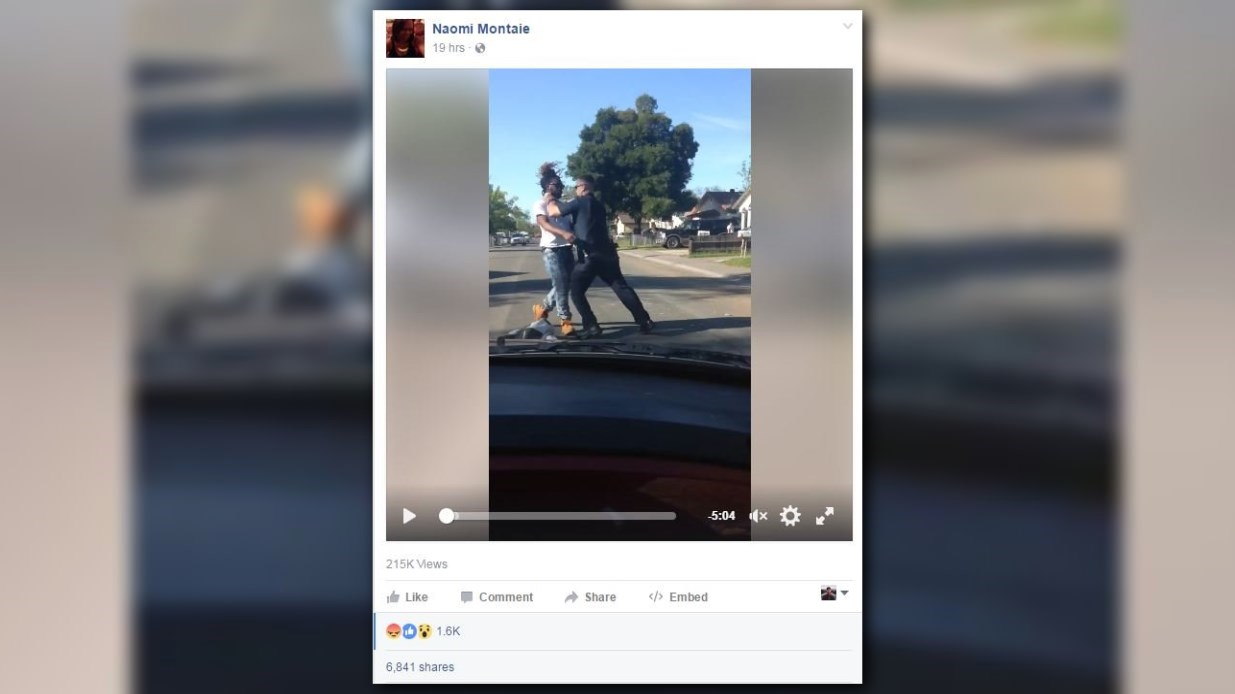While Sacramento police investigate an altercation in which an officer is filmed taking questionable action against a man for allegedly jaywalking, the video has raised questions about pedestrian rights.
The incident was recorded Monday just after 5 p.m. when an officer stopped a man who “was observed crossing the street unlawfully near the intersection of Cypress Street and Grand Avenue in North Sacramento,” according to a statement released by Sacramento Police Department.
For an unknown reason, the statement reads, the officer threw the man to the ground and began striking him in the face with his hand multiple times.
Those who have seen the video argue the man was simply walking across a neighborhood street.
While we don’t know what proceeded the video at this point, its aftermath has sparked many to argue the merit of the officer’s actions, including the Sacramento Police Department.
Could someone simply crossing the street in their neighborhood be fined by an officer?
The short answer, according to Sacramento Police Department PIO Sgt. Bryce Heinlein, is yes, you could potentially be fined; however, jaywalking as defined by California law and Sacramento city code is not an offense for which one is typically arrested.
Heinlein points out much of what leads to that citation is up to the officer’s interpretation of the law being violated.
California has many definitions of jaywalking, the most common of which defined by California Vehicle Code (CVC) 21955, which states “between adjacent intersections controlled by traffic control signal devices or by police officers, pedestrians shall not cross the roadway at any place except in a crosswalk.”
Heinlein cited the following CVCs and Sacramento city codes the officer might have thought the man was violating:
- CVC 21954. (a) Every pedestrian upon a roadway at any point other than within a marked crosswalk or within an unmarked crosswalk at an intersection shall yield the right-of-way to all vehicles upon the roadway so near as to constitute an immediate hazard.
- CVC 21956. (a) No pedestrian may walk upon any roadway outside of a business or residence district otherwise than close to his or her left-hand edge of the roadway.
(b) A pedestrian may walk close to his or her right-hand edge of the roadway if a crosswalk or other means of safely crossing the roadway is not available or if existing traffic or other conditions would compromise the safety of a pedestrian attempting to cross the road. - Sacramento City Code 10.20.020, which states no pedestrian shall cross a through-street within 300 feet of a crosswalk other than within such crosswalk, except at a location where a school bus is stopped and is displaying flashing red lights.
- Sacramento City Code 10.20.050, which states no person shall stand or otherwise be in any roadway if such action interferes with the lawful movement of traffic. This section shall not apply to any public officer or employee, or employee of a public utility, when necessarily upon a street in the line of duty.
In its statement, the department has since decried the actions of the officer, defining the actions as “behavior that [the department] would consider unacceptable conduct by a Sacramento Police Officer.”
The man, who won’t be identified at this time because he faces no charges, has since been released.
The officer involved is currently on paid administrative leave pending the outcome of an internal investigation.


